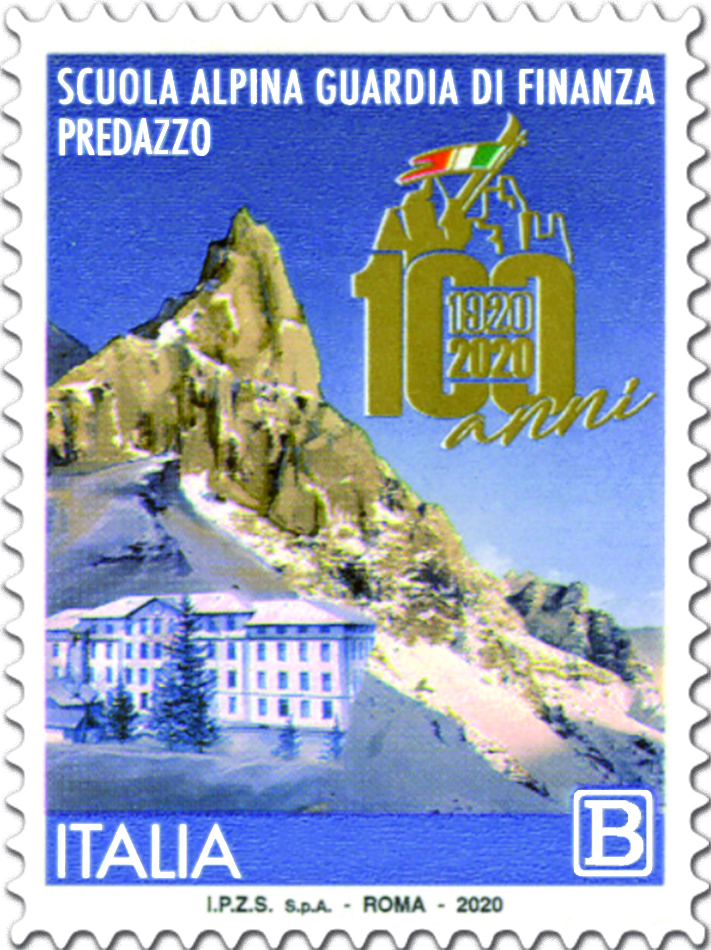POSTE ITALIANE 8^ Emissione del 11 maggio 2018
Titolo: Bicentenario inaugurazione Teatro Marrucino – Chieti
Il teatro fu edificato su decisione del Decurionato di Chieti per sopperire alla scarsità di posti a sedere presenti nel Teatro Vecchio, il precedente teatro principale della città, risalente alla seconda metà del XVIII secolo. I lavori ebbero inizio nel marzo 1813: il progetto curato dall’architetto Eugenio Michitelli prevedeva la realizzazione di un nuovo edificio sul suolo occupato in precedenza dalla chiesa di Sant’Ignazio, già sconsacrata. Nel 1817 si conclusero i lavori, e la cerimonia di apertura, tenutasi l’11 gennaio 1818, precedette di alcuni giorni lo spettacolo inaugurale, che fu La Cenerentola di Gioachino Rossini. Originariamente il teatro fu dedicato a San Ferdinando, in onore al re Ferdinando I delle Due Sicilie, ma fu poi rinominato nel giugno 1861, dopo l’unità d’Italia, in onore della popolazione dei Marrucini, originaria dell’Abruzzo preromano.
Nel 1872, l’ingegnere Luigi Daretti ebbe l’incarico dal Comune di curare un ampliamento del teatro: furono così aggiunti un loggione e la scala d’accesso alla balconata. Inoltre la platea fu ristrutturata dagli architetti Giovanni Vecchi ed Enrico Santuccione ed assunse una forma semicircolare. Nel 1874 iniziarono altri lavori di miglioramento estetico del teatro; nel soffitto della sala fu inserito un rosone ligneo diviso in otto settori, ciascuno dei quali decorato con dipinti allegorici di figure femminili che simboleggiano le arti teatrali e musicali. Sono inoltre presenti i ritratti di Carlo Goldoni, Giovanni Battista Pergolesi, William Shakespeare, Johann Wolfgang von Goethe, Giovanni Paisiello, Vittorio Alfieri, Gioachino Rossini e Giuseppe Verdi. Nel 1875 venne aggiunto un sipario dipinto dal pittore napoletano Giovanni Ponticelli che ritrae un episodio della vita di Gaio Asinio Pollione, console romano nel 40 a.C. e originario di Teate, l’antica Chieti.
Nel corso degli anni il Teatro Marrucino ha ospitato rappresentazioni teatrali e musicali di artisti prestigiosi, tra cui Eleonora Duse, Emma ed Irma Gramatica, Cesco Baseggio e Nanda Primavera. Nel 1904, inoltre, vi si tenne la prima rappresentazione abruzzese della tragedia La figlia di Iorio, di Gabriele D’Annunzio, che donò al teatro il manoscritto originale contenente il copione dell’opera.
A partire dagli anni della Seconda guerra mondiale il teatro vide un periodo di declino che culminò con la chiusura negli anni cinquanta. Nel 1972, tuttavia, il teatro fu riaperto; il primo spettacolo fu nuovamente l’ouverture Cenerentola di Rossini. Dall’agosto 2001 esso è stato riconosciuto Teatro Lirico d’Abruzzo con la Legge Regionale nº 40/2000 della Regione Abruzzo e, nel 2003, ha acquisito il titolo di Teatro di Tradizione.
The theater was built on the decision of the Decurionato of Chieti to make up for the lack of seats in the Teatro Vecchio, the city’s former main theater, dating back to the second half of the 18th century. The works began in March 1813: the project by architect Eugenio Michitelli foresaw the construction of a new building on the ground previously occupied by the church of Sant’Ignazio, already deconsecrated. In 1817 the work was completed, and the opening ceremony, held on 11 January 1818, preceded by a few days the inaugural show, which was La Cenerentola by Gioachino Rossini. Originally the theater was dedicated to San Ferdinando, in honor of King Ferdinando I of the Two Sicilies, but was later renamed in June 1861, after the unification of Italy, in honor of the Marrucini population, originally from pre-Roman Abruzzo.
In 1872, engineer Luigi Daretti was commissioned by the Municipality to oversee the expansion of the theater: a gallery and the access stairway to the balcony were added. In addition, the audience was renovated by the architects Giovanni Vecchi and Enrico Santuccione and assumed a semicircular shape. In 1874 other works of aesthetic improvement of the theater began; in the ceiling of the hall was a wooden rose window divided into eight sectors, each of which decorated with allegorical paintings of female figures that symbolize theatrical and musical arts. There are also portraits of Carlo Goldoni, Giovanni Battista Pergolesi, William Shakespeare, Johann Wolfgang von Goethe, Giovanni Paisiello, Vittorio Alfieri, Gioachino Rossini and Giuseppe Verdi. In 1875 a curtain painted by the Neapolitan painter Giovanni Ponticelli was added, depicting an episode of the life of Gaius Asinius Pollione, Roman consul in 40 BC. and originally from Teate, the ancient Chieti.
Over the years, the Marrucino Theater has hosted theatrical and musical performances by prestigious artists, including Eleonora Duse, Emma and Irma Gramatica, Cesco Baseggio and Nanda Primavera. Moreover, in 1904, the first Abruzzese performance of the tragedy was held by The Daughter of Iorio, by Gabriele D’Annunzio, who gave the theater the original manuscript containing the script of the work.
From the years of the Second World War the theater saw a period of decline that culminated with the closure in the fifties. In 1972, however, the theater was reopened; the first show was again Rossini’s Cenerentola overture. Since August 2001 it has been recognized Teatro Lirico d’Abruzzo with the Regional Law nº 40/2000 of the Abruzzo Region and, in 2003, has acquired the title of Theater of Tradition.
| data /date | 11.05.2018 |
| n. catalogo / n. catalog | Michel 4040 – YT 3801 – Un. 3883 – Sn. 3507 |
| dentellatura/Serration | 11 |
| stampa/printing | fustellatura – rotocalco |
| tipo di carta/paper type | bianca patinata neutra |
| stampato | I.P.Z.S. Roma |
| fogli/sheet | 28 |
| dimensioni/dimensions | 48 x 430mm |
| disegnatore /designer | |
| tiratura | 400.000 |







